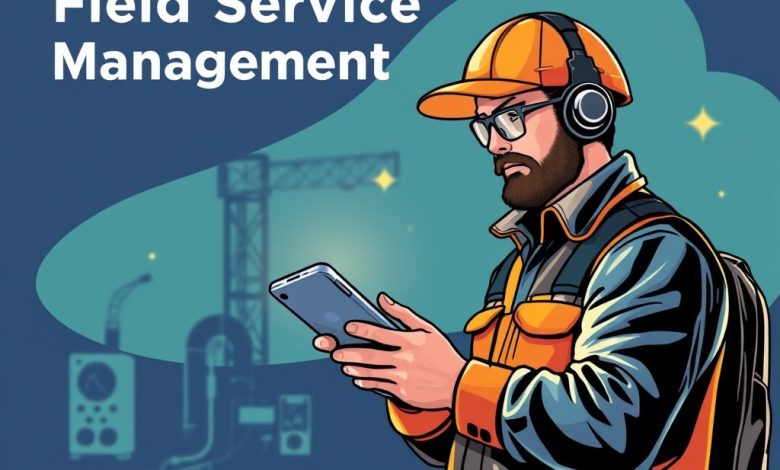Field Service Management with Realtime Technician Tagging

Field Service Management with Realtime Technician Tagging
Introduction
Field service management (FSM) refers to the processes and systems used to manage and coordinate work performed outside of a traditional office environment. This includes tasks such as scheduling appointments, dispatching technicians, managing inventory, and tracking customer interactions. With the advent of technology, particularly mobile devices and cloud computing, FSM has evolved significantly over the past decade.
One of the key advancements in modern FSM is the implementation of real-time technician tagging. This feature allows companies to track the location and status of their field technicians in real-time, providing numerous benefits for both customers and businesses alike. In this article, we will explore the concept of real-time technician tagging within the context of field service management, its advantages, challenges, and best practices for implementation.
The Rise of Real-time Technician Tagging
Real-time technician tagging emerged as a response to the growing need for improved visibility and efficiency in field service operations. By leveraging GPS-enabled mobile devices and cloud-based software solutions, companies can now monitor the whereabouts and activities of their technicians in real-time.
This technology enables:
- Accurate job scheduling and dispatching
- Enhanced customer communication
- Improved resource allocation
- Increased operational transparency
How Real-time Technician Tagging Works
The process of implementing real-time technician tagging typically involves the following steps:
- Mobile device setup: Technicians use GPS-enabled smartphones or tablets to receive job assignments and update their status.
- Cloud-based software: A central platform manages all technician data, including locations, job statuses, and performance metrics.
- Real-time updates: As technicians complete jobs or move between locations, their information is automatically synced with the cloud system.
- Dashboard visualization: Managers can view technician locations, job statuses, and other relevant data through a user-friendly interface.
Advantages of Real-time Technician Tagging
Implementing real-time technician tagging offers several significant benefits for field service organizations:
- Improved Efficiency: By knowing exactly where each technician is located, companies can optimize routing and reduce travel time between jobs.
- Enhanced Customer Experience: Customers receive accurate estimated arrival times and can track the progress of their service visit.
- Better Resource Allocation: Managers can quickly identify which technicians are available and allocate them to high-priority jobs more effectively.
- Increased Transparency: All stakeholders have access to real-time information, reducing misunderstandings and improving overall communication.
- Data-driven Decision Making: Managers can analyze historical data and trends to make informed decisions about staffing, pricing, and service offerings.
Challenges in Implementing Real-time Technician Tagging
While the benefits of real-time technician tagging are substantial, there are also potential challenges to consider:
- Initial Investment: Implementing a robust FSM solution with real-time capabilities requires significant upfront investment in hardware, software, and training.
- Privacy Concerns: Some customers may be hesitant to allow their location to be tracked, especially if they are not explicitly informed about it.
- Technical Issues: Connectivity problems or outdated mobile devices can disrupt the flow of real-time data.
- Employee Resistance: Some technicians might resist the idea of being constantly monitored, potentially leading to low adoption rates.
- Data Overload: With real-time updates coming in continuously, managers need to develop strategies to handle and prioritize large volumes of data.
Best Practices for Implementing Real-time Technician Tagging
To ensure successful implementation of real-time technician tagging, consider the following best practices:
- Clear Communication: Inform customers about the use of real-time tracking and obtain their consent before collecting any location data.
- Comprehensive Training: Provide thorough training to both technicians and managers on how to use the new system effectively.
- Regular Updates: Ensure that all mobile devices are kept up-to-date with the latest software versions and security patches.
- Data Security: Implement robust security measures to protect sensitive customer and company data stored in the cloud system.
- Continuous Monitoring: Regularly review and refine the system based on feedback from users and observed results.
- Integration with Existing Systems: Ensure seamless integration with other FSM tools and processes to maximize efficiency gains.
Conclusion
Real-time technician tagging represents a significant advancement in field service management technology. By providing unprecedented levels of visibility and control, it enables companies to operate more efficiently, deliver better customer experiences, and make data-driven decisions.
As the field service industry continues to evolve, embracing technologies like real-time technician tagging will become increasingly crucial for staying competitive. While challenges exist, the benefits far outweigh the costs for many organizations.
As field service managers consider implementing real-time technician tagging, they should carefully weigh the potential advantages against their specific business needs and resources. By doing so, they can harness the power of this technology to transform their operations and drive success in an increasingly competitive market.




